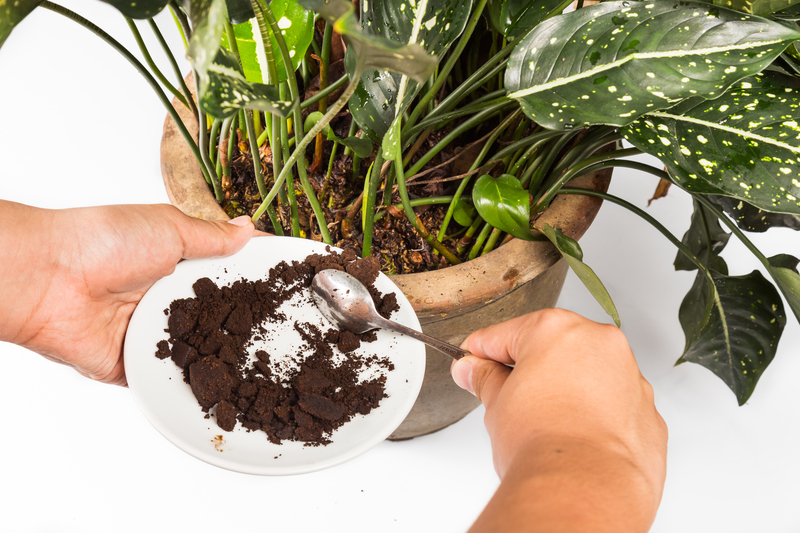Harness the Green Potential of Gardening for Climate Health
Posted on 04/07/2025
Is it possible to combat climate change while enjoying the tranquility of your backyard? Absolutely! Gardening for climate health is an influential and accessible way for individuals to make a tangible impact on the environment. From reducing greenhouse gases to supporting biodiversity, your garden can be a beacon of carbon reduction and ecological balance. In this detailed guide, we'll explore the multifaceted ways in which harnessing the green potential of gardening can benefit both our planet and our well-being.
Understanding the Connection: Gardening and Climate Change
Gardening isn't just a hobby; it's a powerful tool in the fight against climate change. Plants naturally absorb carbon dioxide, a primary greenhouse gas, through photosynthesis. By cultivating diverse gardens, we foster micro-ecosystems that boost soil health, increase carbon sequestration, and provide critical refuges for wildlife.
How Traditional Gardens Contribute to Climate Health
- Carbon Capture: Plants act as carbon sinks, pulling CO2 from the atmosphere and storing it in their roots, stems, and leaves.
- Ecosystem Services: Gardens enhance pollination, improve air and water quality, and help regulate local temperatures.
- Soil Enrichment: Proper gardening techniques improve soil structure and increase its capacity to store carbon.
The Ecological Impact of Gardening Efforts
When done thoughtfully, gardening for climate health goes beyond mere ornamentation. Native planting, composting, and sustainable irrigation can significantly reduce a garden's carbon footprint. Moreover, urban gardens play a vital role in moderating the "heat island" effect seen in cities, making neighborhoods cooler and more resilient to climate extremes.

Practical Strategies: Maximizing the Climate Potential of Your Garden
1. Choose Climate-Appropriate and Native Plants
One of the most impactful steps is selecting native, climate-resilient plants for your garden. These species have evolved to thrive in local conditions, requiring less water and minimizing the need for chemical fertilizers or pesticides. This not only conserves resources but also fosters local wildlife populations.
- Why Native Plants Matter: They support native pollinators, enrich soil biodiversity, and have higher rates of survival, reducing the need for replanting.
- Low Water Demand: Native and drought-tolerant plants decrease the overall water consumption, a significant environmental benefit in the face of increasing droughts.
2. Composting: Transforming Waste into Climate Action
Composting is a cornerstone of climate-savvy gardening. Food scraps and yard waste that end up in landfills generate methane, a potent greenhouse gas. Through composting, these materials are transformed into valuable soil amendments that support robust plant growth and greater carbon capture.
Benefits of Composting:
- Reduces landfill waste and associated greenhouse gas emissions
- Improves soil health and water retention, cutting the need for irrigation
- Provides natural fertilizer, minimizing chemical use
3. Gardening for Biodiversity and Resilience
Biodiversity is at the heart of climate-adaptive gardening. Creating a diverse garden--incorporating vegetables, native flowers, shrubs, and trees--bolsters resilience to pests, diseases, and unpredictable weather. Each plant type plays a unique role in supporting insects, birds, and beneficial microbes, helping to build a sustainable ecosystem right in your backyard.
- Mix annuals and perennials to offer continuous cover and food sources
- Plant hedges or buffer strips to shield against wind and provide wildlife corridors
- Create habitats for pollinators by planting blooms with varying flowering periods
4. Efficient Water Management Techniques
Water usage is increasingly strained by climate change. To harness the full green potential of gardening, adopt water-wise practices:
Smart Water Techniques:
- Install drip irrigation and soaker hoses for targeted watering
- Collect rainwater in barrels to supplement irrigation needs
- Mulch generously to reduce evaporation and maintain soil moisture
5. Mindful Use of Garden Products
Many pest-control and fertilization products are fossil-fuel intensive and release nitrous oxide, a high-impact greenhouse gas. Embracing organic and natural methods greatly reduces environmental harm and safeguards both climate and soil health.
- Opt for organic fertilizers like compost and manure
- Utilize natural pest control--such as encouraging ladybugs, birds, and other beneficial insects
- Avoid synthetic pesticides when possible, resorting to manual solutions and plant-based remedies
Urban Gardening for Climate Health: Green Potential in Small Spaces
Even if you don't have a sprawling backyard, you can still harness the power of gardening for climate wellness. Urban gardens, rooftop greenspaces, and vertical gardens are increasingly vital in dense cities. They cool buildings, clean the air, and provide fresh food to local communities.
Benefits of Urban Planting:
- Reduces Urban Heat: Green roofs and walls absorb sun and mitigate heat islands
- Cleans Air: Plants filter particulates and toxins from the atmosphere
- Strengthens Community: Shared urban gardens foster community engagement and climate awareness
Gardening for a Greener, Healthier Society
The benefits of eco-conscious gardening extend beyond environmental impacts. Engaging with nature through gardening promotes physical activity, mental wellness, and community bond. These social and health advantages reinforce the importance of making gardening a key component of climate adaptation strategies.
Community Gardens: Collective Action for Climate Health
Community gardens are living laboratories for sustainable practices. Neighbors can pool resources, share knowledge, and multiply their green potential. These spaces often serve as educational hubs, demonstrating composting, water conservation, and permaculture principles to people of all ages.
- Develop shared composting facilities to process greater volumes of organic waste
- Host workshops on sustainable gardening techniques and climate literacy
- Advocate for green policies and urban beautification projects with local governments
Climate-Positive Gardening: An Action Plan
Ready to unleash the green potential of your garden for climate health? Adopt these step-by-step actions to transform your outdoor or indoor space into a climate champion:
- Assess your garden's current carbon and water footprint
- Switch to native or drought-tolerant plant varieties
- Implement composting for all kitchen and yard waste
- Install rainwater harvesting systems
- Maximize plant diversity and perennial coverage
- Reduce or eliminate the use of lawn mowers and gas-powered tools
- Join or start a local gardening group to share best practices
Gardening Technology for Climate Health
Innovations in garden technology can further enhance sustainability. Smart irrigation controllers, solar-powered tools, and composting gadgets make gardening more environmentally friendly and accessible to all skill levels.
- Use soil moisture sensors to avoid overwatering
- Adopt solar lighting and tools to cut down on fossil fuel usage
- Monitor plant health with smartphone apps for targeted care

FAQs: Harnessing the Green Potential of Gardening for Climate Health
Q: Can small gardens really make a difference for climate health?
Yes! Collectively, small gardens create green corridors, support biodiversity, and sequester significant amounts of carbon. Every ecologically managed garden contributes to the larger environmental picture.
Q: How does gardening support wildlife as part of climate health?
Climate-smart gardens provide food, nesting habitats, and shelter to insects, birds, and mammals. Such environments foster resilient ecosystems that better withstand climate shocks.
Q: Are there gardening techniques that actually reduce carbon emissions?
Absolutely. Composting, minimizing soil disturbance (no-dig), planting perennials, and using manual or electric rather than gas-powered tools all contribute to lower emissions.
Q: What is the role of soil in gardening for climate mitigation?
Healthy soils act as massive carbon storage banks. Practices like adding compost, planting cover crops, and minimizing tillage ensure soils retain or even increase their carbon stocks.
Conclusion: Cultivating Hope - The Garden as a Climate Solution
Gardening is an enjoyable, creative, and scientifically powerful way to harness the green potential for climate health. By transforming our gardens with sustainable practices, composting, biodiversity, and smart water use, we foster resilience in our environments and communities. Whether you tend a window box or manage a community plot, every action you take is a step towards a more stable climate and a healthier planet.
Start today--let your garden grow as a sanctuary for climate solutions, biodiversity, and hope for a greener tomorrow.

